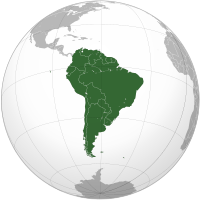
Photo from wikipedia
Large urban settlements are being organized in metropolitan areas, with a polarizing city influencing and shaping the landscape of the hinterland. Transport infrastructure networks are the main vectors for the… Click to show full abstract
Large urban settlements are being organized in metropolitan areas, with a polarizing city influencing and shaping the landscape of the hinterland. Transport infrastructure networks are the main vectors for the permanent flux of resources, and these exchanges should be maintained undisturbed. A poor transportation network impedes the continuity of these flows, causing unsatisfaction, ultimately generating planning-based conflicts within metropolitan zones. This study aims in assessing the potential occurrence of metropolitan conflicts generated by the transportation network design. We used a quantitative approach based on a set of new proposed indexes. The methods were applied on nine metropolitan zones from Romania. The results show that each metropolitan zone has specific potential for conflict occurrence. The higher potential was recorded within the more recent established metropolitan zones. Our results raise the question on whether the Romanian metropolitan zones are fully functional and worthy of this status. The study provides a useful and usable tool in assessing the effectiveness of the transportation networks within metropolitan areas, establishing the potential conflict occurrence and it provides interesting insights about the metropolitan transportation issues, raising red flags toward local and regional decision makers and planners.
Journal Title: Sustainability
Year Published: 2020
Link to full text (if available)
Share on Social Media: Sign Up to like & get
recommendations!